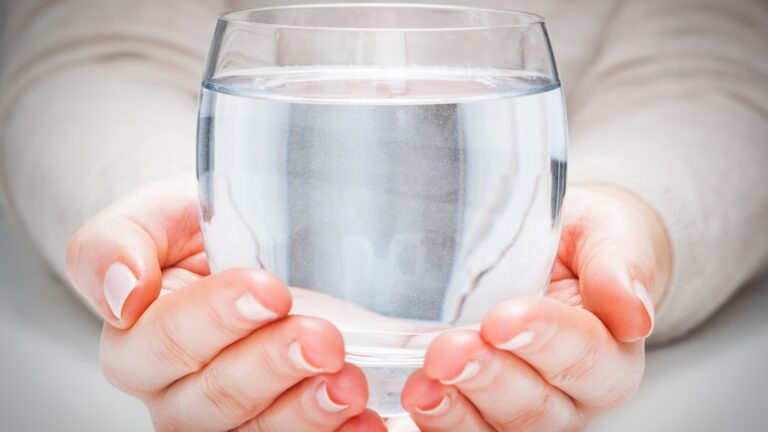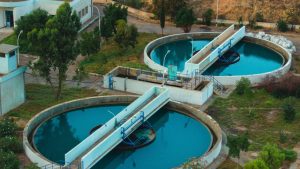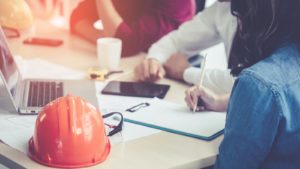Do you know that more than two billion people worldwide lack access to safe drinking water while the rest waste around 1.7 trillion gallons of water per year? Yes, although the world is full of beautiful and breathtaking waterfalls and streams, only 3% of the planet’s water is safe to use and drink. This is a global crisis where world leaders and scientists are trying different strategies to find solutions.
Modern technology has come forward as one of the best solutions for the safe drinking water crisis through its powerful capabilities. In this article, we are exploring the best seven innovative technologies that have been developed to solve the water crisis in Australia and around the world.
Deep Look into the Global Water Crisis

- Many regions around the world face water scarcity, where the water demand exceeds the available supply.
- The reasons behind water scarcity include population growth, urbanisation, climate change, etc., which make billions of people around the world vulnerable when it comes to access to clean and safe drinking water.
- The quality of available water is also a significant concern where the pollution from industrial discharges, agricultural runoff, and insufficient sanitation infrastructure contribute to uncontrollable amounts of contamination in water sources.
- Poor water quality easily leads to waterborne diseases, environmental degradation, and further strain on limited water resources.
- Rainfall patterns are changing due to climate change, which makes droughts and floods more frequent and puts people in severe water shortages and disturbances.
- When we look more deeply at the rising clean water challenges, what we can see is that the supply of clean water can not be carried on just by policy and governance, as it requires more creative and innovative answers in today’s digital era.
7 Innovative Technologies to Enhance Water Management

Water Conservation through Acoustic Nanotube Tech
The acoustic nanotube technology was first initiated by NASA for wastewater treatment on the International Space Station. This innovation was specifically designed to recycle water in space; now, it has far-reaching applications on Earth as a solution to the clean water crisis as well. If we look into its mechanism more elaborately, unlike conventional methods relying on pressure to remove impurities, this technology utilises acoustics to propel water through carbon nanotubes within a filtration matrix.
As it is strategically positioned, these nanotubes enable water molecules to pass while retaining contaminants. The most essential component is the oscillator circuit, as it generates acoustic vibrations that prompt water molecules to de-bond and traverse the filter for purification. This breakthrough offers a sustainable and energy-efficient solution to address the lack of access to clean drinking water problem on Earth and quality issues globally. This also showcases the transformative and strategic initiatives of space-inspired technologies for global issues.
Automatic Variable Filtration is one of the Major Water Recycling System
Automatic Variable Filtration or, in short, AVF spreads its capacity as a strategic solution to the lack of clean drinking water crisis. This purification technology operates on a straightforward principle, which is an upward flow of influent passes through a downward flow of filter media. It goes without saying that this is remarkably effective, and it eliminates the need for supplementary filtration or cleaning which offers a simplified and resource-efficient process.
The most significant thing here is that AVF is known as an economical and energy-efficient technology because of its mechanical simplicity, which is free of moving components and power needs. Due to its high levels of adaptability, AVF is one of the promising, new wastewater treatment technologies that have the potential to address urgent water shortage and quality issues on a large scale. Some of its applications include wastewater treatment, municipal drinking water, and pre-filtration for desalination.
Water Purification Utilising Bioaugmentation
Bioaugmentation is becoming a rising star among the many tools that are designed to address the challenges of lack of clean water around the world, particularly as one of the main wastewater treatment technologies. The bioaugmentation technology has the transformative power of microorganisms. This method can break down pollutants in the wastewater, such as oils and carbon substrates, by adding a carefully chosen blend of harmless bacteria and enzymes, making the water suitable for a variety of uses.
This method not only helps in the production of synthetic fertilisers and potable water but also aligns with sustainable practices in the wastewater industry. However, the effectiveness of the bioaugmentation method requires a multi-step process that ensures the safe removal of the introduced microorganisms after completing their vital role in wastewater treatment on the way to provide answers for the clean drinking water issues.
Desalination Systems for Community Water Projects
This system plays an important role in the quest to find the best solutions for the lack of access to clean water crisis, particularly in regions like the Middle East. This procedure separates freshwater from saltwater, making it an essential resource for several uses. New developments concentrate on increasing efficiency in traditionally energy-intensive fields. It is noteworthy that by increasing the size of the membranes in desalination plants, scientists and engineers have significantly decreased the amount of energy used.
If elaborated more clearly, They have shifted from 8-inch to 16-inch membranes, featuring smaller pores and quadrupling the active area, which proves beneficial. This innovation not only optimises water processing but also significantly lowers operational costs to an unbelievable extent.
Cloud-Based Water Management with Nanotechnology
Cloud-Based Water Management, coupled with nanotechnology, stands out tall in the realm of new methods to be utilised to overcome the global water crisis. Employing nanotechnology for water purification emerges as a cost-effective and efficient strategy for countries facing water scarcity. Operating on a molecular level, nanotechnology helps with the removal of impurities, which enhances water availability as a smart water management system.
This multipurpose invention helps with filtration, desalination, remediation, and overall water treatment. Among the most notable applications of nanotechnology are carbon nanotube (CNT)–based filtration systems, which effectively remove organic, inorganic, and biological impurities from water to ensure its safety for human consumption.
Photocatalytic Water Purification
Photocatalytic water purification has emerged as a commonly used solution in the global water crisis. This technology employs photocatalysts and ultraviolet rays to swiftly eliminate toxic elements and impurities from water. As it is renowned for its speed and efficiency, photocatalysis functions under mild conditions, showing its ability to contribute as a green and environmentally sustainable technology.
Its simplicity contributes to cost-effectiveness, marking a practical approach to water purification. The newly developed method is highly effective in eliminating a wide variety of contaminants, such as pesticides, bacteria, viruses, dyes, and crude oil.
Climate-Responsive Water Systems with Solar-Powered Water Filtration
Climate-responsive water systems, integrated with solar-powered water filtration, offer a transformative solution to the global water crisis as these systems adapt to changing environmental conditions, addressing the challenges posed by climate change. Solar-powered filtration adds an eco-friendly dimension, utilising renewable energy for water treatment.
The combination of solar filtration and climate-responsive technology improves efficiency and reduces dependency on traditional power sources. This strategy works especially well in areas where there is a risk of water shortage and climate change. The solar-powered component makes water treatment more affordable while also promoting sustainability.
Finding Smart Answers through Innovations

When you are embarking on a business journey, sometimes you might feel like you can’t find proper answers to some of your problems. That actually means you need creative answers! The global water crisis is one such area people have been trying to figure out the best way to overcome throughout all these years. We can see that these innovative technologies expand the opportunity to address the clean water challenge, adding a whole lot of practicality into it.







